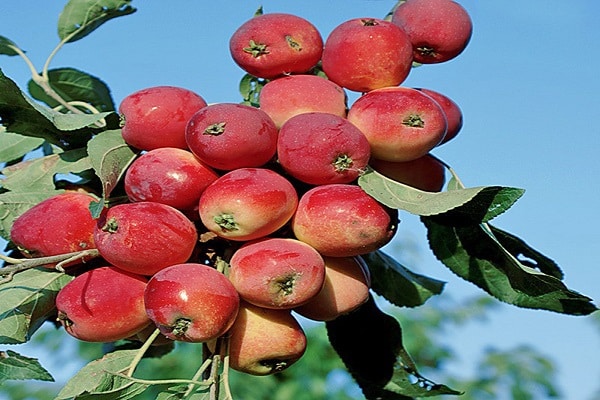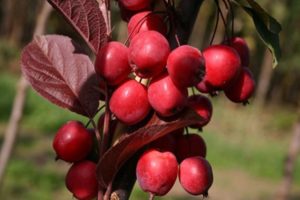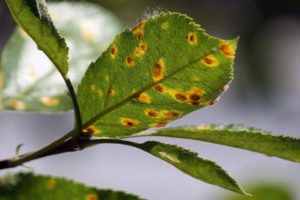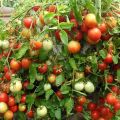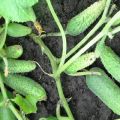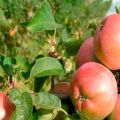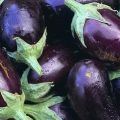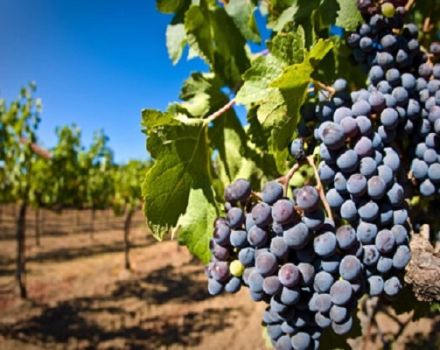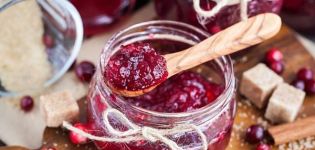Breeding history, characteristics and description of the Alyonushka apple variety, growing regions
Among gardeners with small gardens, dwarf apple varieties are valued, which grow up to 2-3 meters. These plant varieties include the Alyonushka apple tree. Such trees are considered one of the best hybrids bred for cultivation in the northern regions.
Before planting Alenka in the garden, you need to familiarize yourself with her description in more detail.
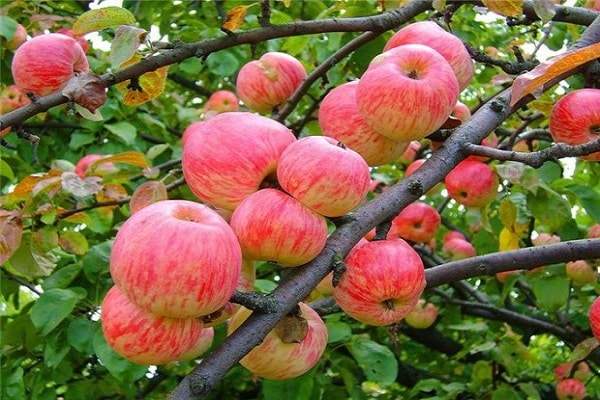
Description and features of the variety
The main feature of the variety is the height of the trees, which grow up to 2-2.5 meters. In the first few years, apple trees develop quite quickly. However, after the first harvest, the rate of tree development decreases by 2-3 times. The crown and branches are covered with brown bark, which has a slight olive tint.
Over time, the trees are overgrown with rounded shoots with a brownish color. Small ovoid leaves are formed on them with denticles at the edges and a sharpness at the end. The leaves are greenish with a dark, matte shade. The features of Alyonushka include flowers that appear during flowering. They are quite large and stand out from the small leaves.
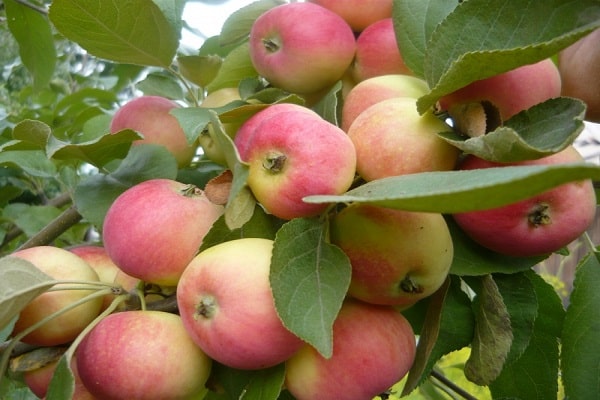
After flowering, apple fruits are formed on the plants, the mass of which reaches 40-50 grams after ripening. These sizes are considered normal for most dwarf varieties. The entire crop is rounded with a slight taper near the tip. The surface of the apples is characterized by slight ribbing and roughness.
The peel of the ripe fruit is yellow with small and blurred pinkish specks.
Gardeners appreciate Alyonushka for her taste, as she has a light sweetish taste with aromatic sourness. The harvested crop is used not only for fresh consumption, but also for making jam, fresh juice, compote or preserves.

Breeding history
This hybrid was bred in the second half of the 20th century by Krasnodar breeders A.S.Tolmachev and N.N. Tikhonov. When obtaining this variety of apples, Papirovka was used, which is common in the Baltic countries. It is thanks to this variety that Alenka is distinguished by the early ripening of the crop, the aroma of the fruits and the high level of yield.
The first few years after breeding, the variety was actively used in industry and grown in the fields. However, today Alyonushka is also grown by ordinary gardeners in their summer cottages.
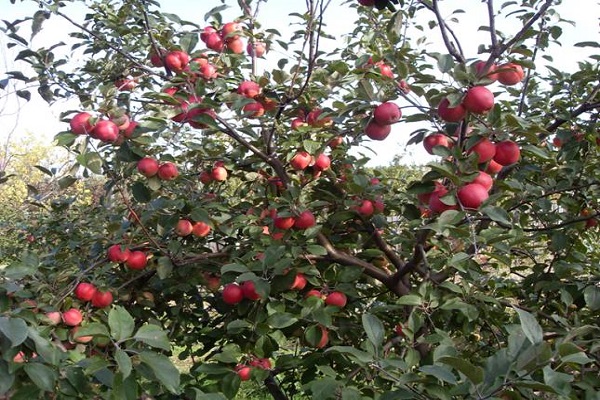
Pros and cons of apple tree Alyonushka
It is known that many varieties of apples have their own advantages and disadvantages.Among the main advantages of this early ripening fruit are the following:
- Rapid maturation of the first harvest. Some varieties of apple trees do not bear fruit for a long time after planting seedlings in the garden. However, Alenka does not belong to such plants, since she begins to produce crops in 2-3 years.
- Productivity. More than 75 kilograms of ripe fruits can be harvested from an adult tree.
- Resilience to climate change. The trees are distinguished by a strong root system that copes with a sharp decrease in temperature and freezing of the soil.
- Restorative functions. This is the main advantage of the variety, since thanks to it the plant quickly recovers from mechanical damage or disease.
- Compactness. Growing Alyonushka, you can save a lot of free space in the garden.
- Easy to harvest. Due to the fact that the trees grow up to only two meters, picking fruits from the tops is much easier.

The disadvantages of the plant include its poor resistance to apple pathologies. For example, trees become infected with scab and are attacked by pests. This often leads to a deterioration in yield and death of apple trees.
Productivity and frequency of fruiting
Apples begin to form on young trees a few years after planting. In the first fruitful year, few fruits are tied on apple trees, since the plant is still young. In this case, 20-40 kilograms of apples are collected from the tree. However, in subsequent years, the amount of the harvest increases significantly and at least 80 kilograms of sweet apples are obtained from each tree.

With proper care, Alenka will delight with good yield every summer. However, if you do not care for the plant, the fruit will set worse and the number of apples will decrease.
Winter hardiness and disease resistance
Many residents of the northern regions with a changeable and harsh climate who plan to grow Alyonushka are interested in the winter hardiness of the variety. Experienced breeders and gardeners are confident that this variety can be considered one of the most resistant to frost. Apple trees are able to survive even serious temperature drops up to 45 degrees below zero. The trees also have medium resistance to high temperatures and droughts.
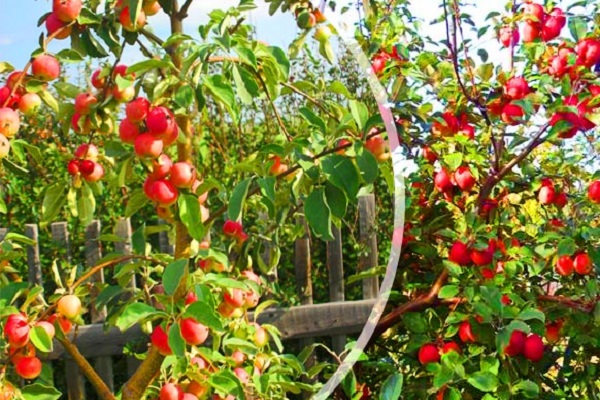
However, Alenka copes with diseases much worse. Most often, immature apple seedlings suffer from diseases, which can die from scab or pests.
Where is the best place to grow?
Cultivation of this variety can be done at high and low temperatures, as it is resistant to almost any climate. However, high yields can only be achieved when grown under the most suitable conditions.
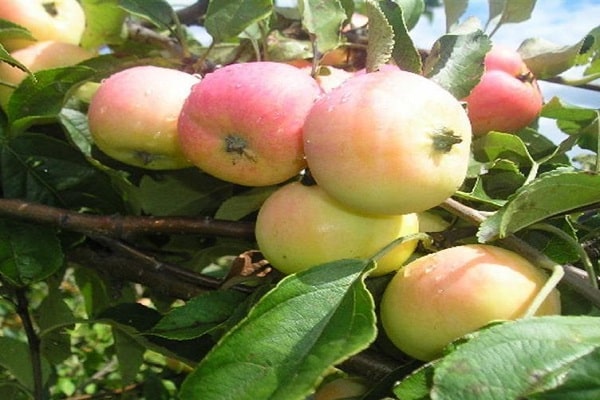
Gardeners advise planting apples in the central region of the country, where there is no drought and sudden temperature changes. Alyonushka also grows well in the northern part, but due to the cold climate, the yield will be low.
Conclusion
For gardeners with small summer cottages, Alyonushka is the best choice. This compact plant does not take up much space in the garden, grows quickly and bears fruit well.
